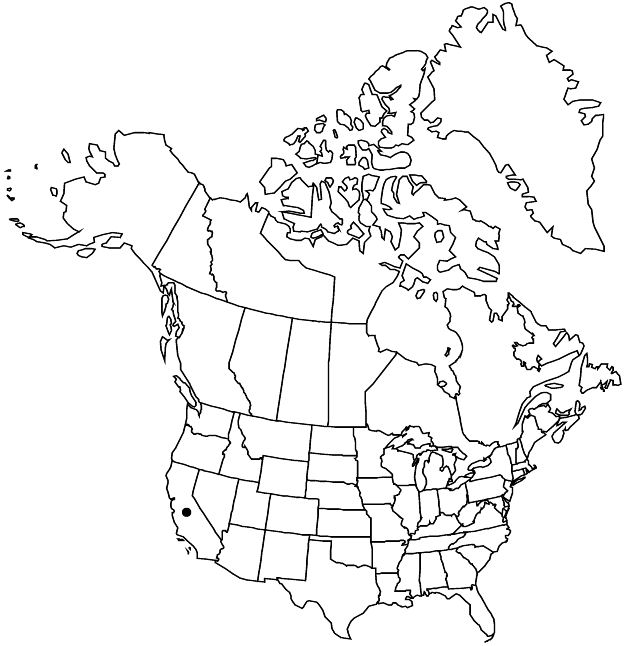Mentzelia crocea
Proc. Calif. Acad. Sci. 7: 110. 1877.
Plants candelabra-form, 30–70(–100) cm. Basal leaves persisting; petiole present or absent; blade lanceolate to linear, margins usually shallowly, rarely deeply, lobed. Cauline leaves: petiole absent; blade ovate to lanceolate, to 40 cm, margins deeply to shallowly lobed. Bracts green, broadly ovate to lanceolate, 6–12.7 × 3.5–7.7 mm, width 1/2–4/5 length, not concealing capsule, margins 3–10-lobed. Flowers: sepals 7–20 mm; petals usually orange, rarely yellow, proximally, yellow distally, usually elliptic to ovate, rarely obovate, 21–42 × 8–17(–21) mm, apex acute; stamens 20+, 11–40 mm, filaments heteromorphic, 5 outermost linear, inner filiform, unlobed; styles 20–35 mm. Capsules clavate, 20–35 × 3–5 mm, axillary curved to 45° at maturity, usually inconspicuously longitudinally ribbed. Seeds 30–40, in 2+ rows distal to mid fruit, tan, dark-mottled, irregularly polygonal, surface minutely tessellate under 10× magnification; recurved flap over hilum absent; seed coat cell outer periclinal wall domed, domes on seed edges less than 1/2 as tall as wide at maturity. 2n = 36.
Phenology: Flowering May–Jun.
Habitat: Rocky slopes, roadsides, grasslands, oak-pine woodlands.
Elevation: 150–1700 m.
Discussion
Mentzelia crocea and M. lindleyi are very similar morphologically and are most reliably distinguished geographically, with M. crocea occurring on the west slope of the Sierra Nevada and M. lindleyi occurring in the Coast Ranges. Low fertility of interspecific crosses supports recognition as separate species (H. J. Thompson 1960), which has been substantiated by genetic differences and non-sister relationships of the two species (J. M. Brokaw and L. Hufford 2010b).
Selected References
None.
